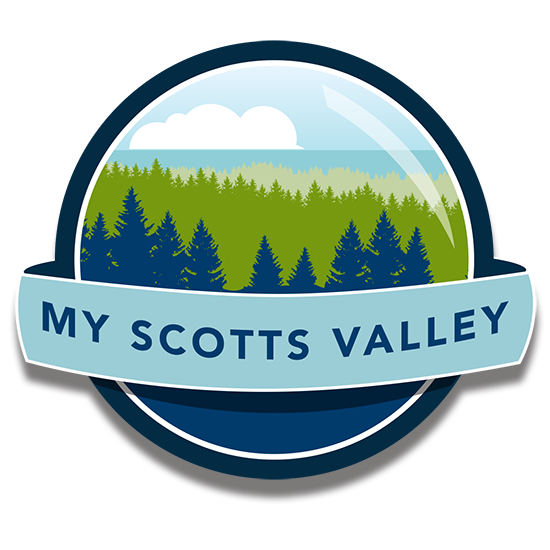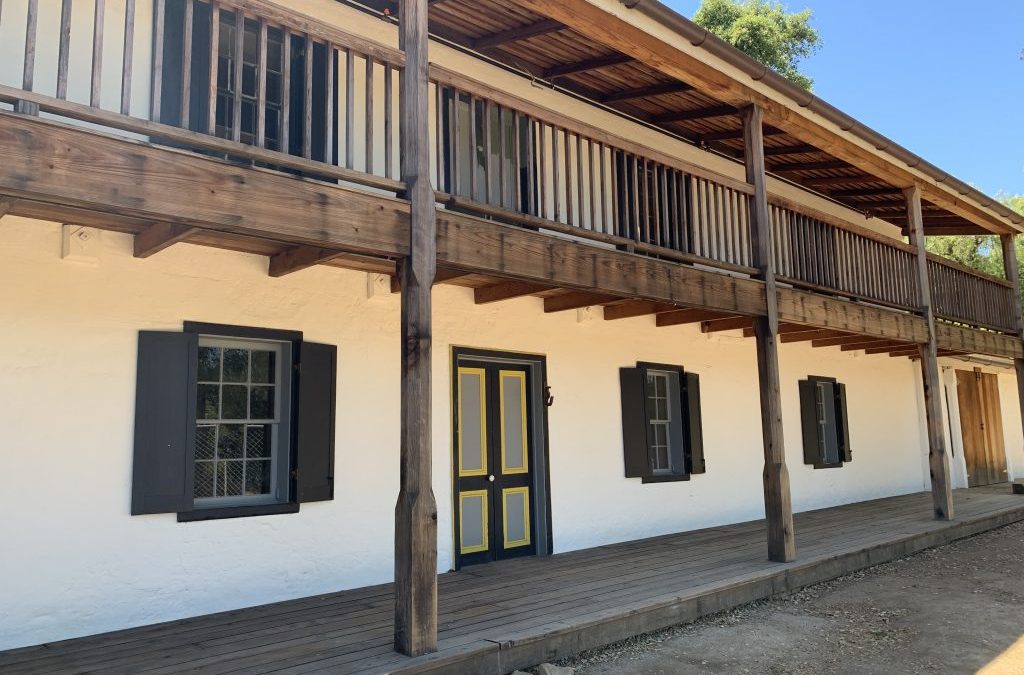Friends of Santa Cruz State Parks today announced the restoration of the Castro Adobe is complete, 20 years after State Parks took ownership of the historic property and began a collaborative effort to preserve and restore the historic adobe.
A new video celebrates the tremendous accomplishment, highlighting the work of scores of preservation professionals, volunteers and donors. View the video here: www.thatsmypark.org/castroadobeproject.
The Castro Adobe was constructed between 1849 and 1850 by native servants for Juan Jose Castro and Rita Pinto Castro on the 8,800-acre Rancho San Andrés. It is one of just four adobe buildings left in Santa Cruz County, and the only two-story adobe remaining. It was the home of the prosperous and prominent Castro family for many years. After the Castro family lost their land, the adobe was stewarded by a series of families over the next century. In 1988, Edna and Joe Kimbro purchased the property as their home, but the building was badly damaged the following year in the Loma Prieta Earthquake.
The Castro Adobe was wrapped in tarps and uninhabitable. Edna Kimbro, whose legendary career included advocating for the preservation and conservation of adobe structures, led a community effort to have the State of California acquire the property. Assembly Member Fred Keeley sponsored legislation which passed in 1999 for the public acquisition of the Castro Adobe. California State Parks took ownership from the Kimbros in 2002, launching a 20-year community effort to repair and restore the adobe.
In 2007, two years after Edna Kimbro’s passing, Friends of Santa Cruz State Parks began to carry on her work in collaboration with California State Parks. Over the next 15 years, the community came together to repair and restore the historic adobe inside and out. Work has included earthquake repairs using handmade 85-pound adobe bricks; seismic stabilization and a new roof; strengthening the second story with an innovative steel beam; installation of a lift to guarantee universal access to the second floor; the addition of electrical and fire suppression systems; restoration of the historic cocina (kitchen) and Potter-Church garden; procurement and historic furnishings and completion of interpretive planning.
“We are deeply thankful to the community of dreamers and doers who made the restoration of this critical part of Pajaro Valley’s history possible,“ Friends Executive Director Bonny Hawley said.
“The stunning restoration of the Castro Adobe highlights the successful collaboration between State Parks and our operational partner Friends of Santa Cruz State Parks,” said Santa Cruz District Superintendent Chris Spohrer. “Generations to come will benefit from this remarkable achievement!”
The new video highlights the two-decade-long community effort to restore this unique property. View the video here: www.thatsmypark.org/castroadobeproject.
Along with the video, a new 3-D virtual tour of Castro Adobe is now available on the Friends website. The self-directed tour explores the interior and exterior of the building including historic furnishings. View the tour here: www.thatsmypark.org/castroadobeproject.
Now that the adobe is restored, Friends is launching the next phase of creating California’s newest State Historic Park, which will include: installing educational exhibits in the adobe; establishing the Kimbro House Visitor Center & Archives; restoring the habitat lands leading to the nearby stream; creating accessible paths; installing parking and restrooms; and making the park a leader in sustainability.
The Castro Adobe State Historic Park is open on a limited basis at monthly open house events. Thousands of people — including hundreds of elementary school students — have visited the park since 2015 through open house events, private tours, special events and school field trips including through the popular Kids2Parks program.
About Castro Adobe State Historic Park
Located in Larkin Valley, near Watsonville, the Castro Adobe is located on the unceded homelands of the Awaswas-speaking Ohlone Tribe known as the Aptos, who stewarded these lands since time immemorial. The two-story building, built between 1849-50, is one of the finest examples of a rancho hacienda in the Monterey Bay area. The property includes the restored cocina (kitchen) and the Potter-Church Garden, a unique outdoor space originally created by then-owners (1968-72) Elizabeth and David Potter in consultation with noted landscape architect Thomas Church.
Friends has led a 20-year restoration effort to preserve and interpret the new State Historic Park in partnership with California State Parks.

